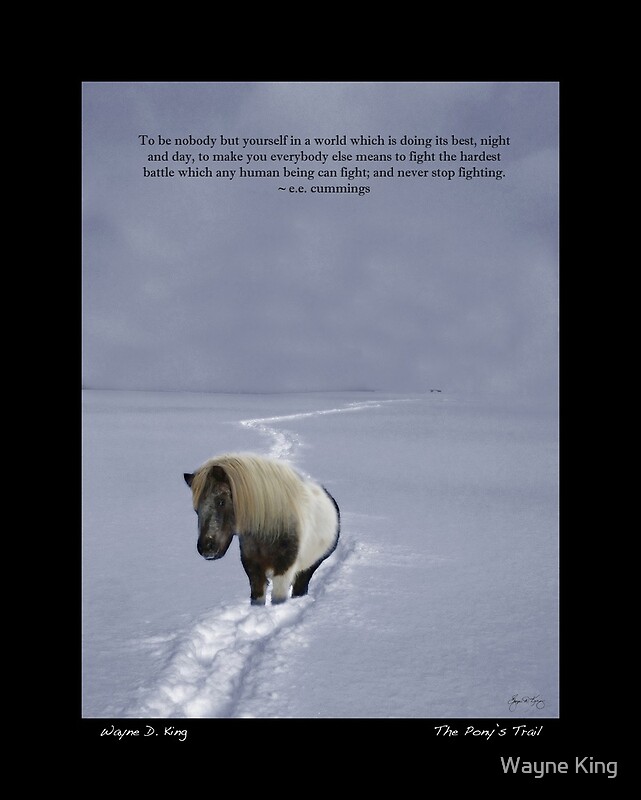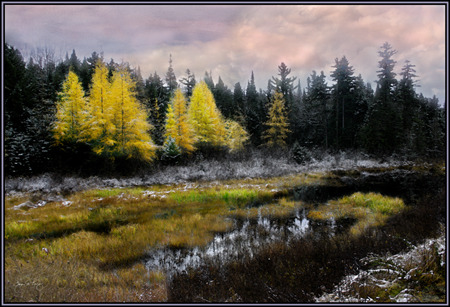Asquamchumaukee
Place of Mountain Waters
A photographic ramble through the Baker River Valley of New Hampshire
King Releases Photographic Book of Baker River Valley
Asquamchumaukee - Place of Mountain Waters
Rumney, NH . . .New Hampshire photographer and artist, and former Senator Wayne D. King has released an art book of images captured along the Baker River Valley entitled: Asquamchumaukee - Place of Mountain Waters. The title, taken from the Pemigewasset Indian name for the Baker River and the valley through which it flows, harkens back to the artist’s own Native American heritage.
King created the book at the urging of friends who had seen a collection of his images from the region and indicated that they would have an interest in a book that included the images. “ I wanted to make the book one that would both share the images of the area and serve a larger purpose as well. We came up with the idea of creating a large format book, printed on high quality paper in a signed limited edition that could be sold to raise funds for local "Got Lunch!" programs in the Baker River Valley.”
"Got Lunch!" provides nutritious lunches for children who qualify for the free school lunch program; providing them with nutritious meals during the summer when the program does not cover them.
Only 250 copies of the hard-cover limited edition, fine art book is printed and numbered and signed by the artist.
The book is also available in an open edition (unsigned) in four different sizes and styles: a large format open edition, a standard size (8”x10”) in both hard-cover and soft-cover, and an eBook. “The hope was that we could create a way for anyone to participate in helping the “Got Lunch!” program by creating a wide range of options for purchasing the book.” said King.
In addition to the books, King has also made cards, posters and prints of many of the individual images from the book available to benefit “Got Lunch!”. There are also a number of mugs, tote bags and clocks made using the images from “Asquamchumaukee”.
“The book or product created from an image in the book would make a great Christmas or Holiday gift” said King. “For those who purchase the book as a gift for someone else, we will also provide a free gift card of the cover image telling them that the proceeds from the book will be providing nutritious meals for deserving children.”
King’s images are a celebration of life, blending the real and the surreal to achieve a sense of place or time that reaches beyond the moment into what he calls a “dreamlike quintessentialism” designed to spark an emotional response. Using digital enhancement, handcrafting, painting, and sometimes even straight photography, King hopes to take the viewer to a place that is beyond simple truth to where truth meets passion, hope and dreams.
As with most of King’s images, only one original signed print is available but open edition fine art prints, posters and greeting cards are also offered as an affordable alternative for people who love art for the pure joy of it and don’t require a signed original.
Book Description
In the heart of New Hampshire, the geographic center of the state, is a beautiful meandering river that is the focal point of a very special community of people and a landscape that grows into the heart like a spreading wildfire. The Baker River, called Asquamchumaukee by the original natives of the region, is an archetype of a river, beginning with the fast flowing waters of the Moosilaukee region and ending in broad lugubrious oxbows where it meets the Pemigewasset River. Anyone who has canoed the Baker or climbed Rattlesnake Mountain or hiked Mount Cube; anyone who has bicycled or driven along the Buffalo Road, can't help but fall in love with this area.
If the landscape isn't enough the people will seal the deal: pragmatic, serious-minded in their politics, and deeply devoted to their families; people who work hard, play hard and who immerse themselves joyfully in the life of their community and the other communities of the valley.
In that spirit, a portion of the proceeds from sales of this book will benefit the local "Got Lunch!" programs in the Valley.
“Got Lunch!” provides nutritious lunches for children who qualify for the Federal free lunch program but who are not provided with meals during the summer vacation. “Got Lunch!” assures that the children of the Baker River Valley will return to school, ready and able to learn and unhampered by the challenges of poor nutrition.
This book and the images from it are available in a number of different formats including a large landscape hardcover, signed and numbered, limited edition art book; an open edition in hardcover, softcover and eBook formats as well as other related products including calendars, clocks, mugs, cards, posters and prints.
Signed, Numbered Limited Edition - Large Format
Hardcover 13” x 11”
42 Pages printed on Proline Pearl Photo Paper
Hardcover with Dust Jacket: $165.00
Hardcover with Image Wrap Cover: $175.00
Shipping & Handling: $10.00
Open Edition (unsigned) - Large Format
Available through Amazon.com
Large Landscape Hardcover 13” x 11”
42 Pages printed on standard paper
Hardcover with Dust Jacket: $98.76
Hardcover with Image Wrap Cover: $110.29
Open Edition (unsigned) - Standard Format
Available through Amazon.com
Standard Landscape Hardcover 8” x 10”
42 Pages printed on standard paper
Hardcover with Dust Jacket: $59.35
ISBN-10: 1320165141
Softcover: $39.58
Plus shipping & handling
eBook from Blurb
42 Pages
$4.99
Catalog of Special Related Products
Proceeds also benefit “Got Lunch!”
 Open Edition Fine Art Prints
Open Edition Fine Art Prints
Many of the images from Asquamchumaukee - Place of Mountain Waters are available as open edition fine art prints in various sizes, framed or unframed, even printed on canvas and metal. A catalog of available images, including some that were not includedin the final book can be viewed at this web address:
Asquamchumaukee Calendar 2015
13 Images from the book in a beautiful Calendar
Suitable for Framing
Asquamchumaukee Limited Edition Poster
Cards, Posters, Clocks, mugs and other related products. Click here:
Other Links
Facebook Page
































